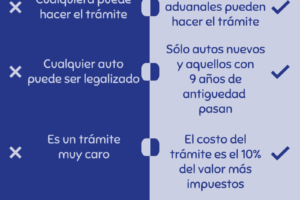What are the requirements to file for bankruptcy in the U.S.?

Bankruptcy in the United States is a legal measure that allows individuals or businesses to discharge their debts under certain conditions.
This process is regulated by the federal Bankruptcy Code, which establishes different chapters, each with its specific requirements. The most common are Chapter 7, known as Liquidation, and Chapter 13, for debt reorganization.
Chapter 7: Liquidation
In Chapter 7, the debtor may be discharged from unsecured debts while retaining certain exempt property. The requirements to benefit from this chapter are as follows:
- Income Below or Equal to State Median: To qualify, your income must be at or below your state median. If your income is higher, you must prove that you cannot pay your unsecured debts.
- No Recent Discharge of Debts: You must not have received a discharge of debts under Chapter 7 in the last 8 years or under Chapter 13 in the last 6 years.
- Not Have Had a Bankruptcy Petition Recently Dismissed: You must not have filed a bankruptcy petition that has been dismissed within the last 180 days.
- Credit Counseling: You must have received credit counseling from a licensed nonprofit agency within the last 180 days.
- No Creditor Fraud: You must not have incurred in fraud against your creditors.
Chapter 13: Debt Reorganization
This chapter is intended for individuals who wish to restructure their debts. Requirements include:
- Being a Natural Person: This chapter is not available for companies.
- Limitations on Discharge of Prior Debts: You must not have received a discharge under Chapter 7 in the last 2 years or under Chapter 13 in the last 4 years.
- Credit Counseling and Bankruptcy Filing: As in Chapter 7, you must have received credit counseling and not have had any recently rejected applications.
- Debt Limits: Your unsecured debts must be less than $419,275 and secured debts must be less than $1,257,850 (these figures may vary).
- Tax Returns: You must be current with your tax returns.
- Repayment Plan: You must have a plan to repay all debts required by law and demonstrate sufficient income to do so.
All requirements
Here is a table with all the requirements for filing bankruptcy in the United States, both for Chapter 7 and Chapter 13:
| N° | U.S. Bankruptcy Filing Requirements |
|---|---|
| 1 | Credit counseling from a licensed nonprofit agency within the last 180 days |
| 2 | Not having defrauded creditors |
| 3 | Not having had a bankruptcy petition dismissed within the last 180 days |
| 4 | Income at or below the corresponding state median (Chapter 7) |
| 5 | Not having extinguished debts under Chapter 7 in the last 8 years. |
| 6 | Not having extinguished debts under Chapter 13 in the last 6 years. |
| 7 | Being a natural person (not available for companies) (Chapter 13) |
| 8 | Not having extinguished debts under Chapter 7 in the last 2 years (Chapter 13). |
| 9 | Not having extinguished debts under Chapter 13 in the last 4 years (Chapter 13) |
| 10 | Have no more than $419,275 in unsecured debt and $1,257,850 in secured debt (Chapter 13). |
| 11 | Have filed all applicable income tax returns (Chapter 13). |
| 12 | Have a proposed repayment plan that pays all debts required by law (Chapter 13). |
| 13 | Have sufficient income to pay all debts required by law (Chapter 13) |
This table provides a detailed and organized summary of the requirements necessary to file for Chapter 7 and Chapter 13 bankruptcy in the United States.
Each type of bankruptcy has its own specific requirements, reflecting the different strategies and objectives of each one.
Chapter 11: Business Reorganization
This chapter is generally reserved for companies, allowing them to restructure their debts while continuing to operate.
Additional Considerations
It is important to keep in mind that bankruptcy can have a significant impact on your credit and your ability to obtain financing in the future.
Also, certain debts such as child support, student loans and certain taxes cannot be waived in most cases.
If you are considering bankruptcy, it is advisable to seek specialized legal advice to better understand your options and the implications of this process.
Advantages of filing for bankruptcy
Filing for bankruptcy in the United States, while a significant decision with long-term consequences, offers several advantages for those facing an unsustainable debt burden.
Here are some of the most outstanding advantages:
- Debt Relief:
- The main advantage of bankruptcy is the relief it offers from overwhelming debt. Under Chapter 7, many debts can be eliminated completely, while Chapter 13 allows for a reorganization of debts to make payments more manageable.
- Stay of Collection Actions:
- Upon filing for bankruptcy, a “stay order” is automatically imposed, which stops most collection actions, including creditor calls, lawsuits, wage garnishments and evictions.
- Protection of Essential Assets:
- Bankruptcy offers the possibility of protecting essential assets. In Chapter 7, certain assets may be exempt, which means you can keep them. In Chapter 13, you can keep most of your assets while complying with the repayment plan.
- Financial Restructuring:
- Chapter 13 in particular allows existing debts to be restructured and repaid over time, which can make it easier to manage the family’s finances and budget.
- Stop Foreclosure and Repossession:
- Bankruptcy can temporarily stop foreclosure on a home and repossession of vehicles, allowing time to reorganize or renegotiate debts.
- Psychological and Emotional Impact:
- By releasing the burden of unsustainable debt, many individuals experience significant relief from stress and anxiety, allowing them to start fresh and focus on rebuilding their financial lives.
- Improved Long-Term Outlook:
- Although bankruptcy has a negative impact on the credit report for a period of time, it also offers the opportunity to start over and rebuild a stronger credit history in the long run.
- Elimination of Certain Legal Liabilities:
- Bankruptcy can relieve debtors of certain legal and financial responsibilities that would otherwise be overwhelming, such as some credit card and personal loan debts.
Disadvantages of bankruptcy
Filing for bankruptcy, while it may offer immediate and necessary relief for those facing overwhelming debt, also carries with it several disadvantages and long-term consequences. Here are some of the main disadvantages:
- Negative Credit Impact:
- Bankruptcy has a significant and lasting impact on your credit report. It can remain on your credit history for 7 to 10 years, making it difficult to obtain new credit, credit cards or loans.
- Difficulties in Obtaining Loans or Mortgages:
- After a bankruptcy, it may be more difficult to qualify for mortgage or personal loans, and if you do qualify, you will probably face higher interest rates.
- Loss of Property and Assets:
- In some cases, particularly under Chapter 7, you may have to give up certain assets. Although many personal properties are exempt, you could lose valuable assets.
- Legal Fees and Costs:
- The bankruptcy process can be costly. There are court fees and administrative costs, in addition to attorney’s fees, which can be a burden if you are already facing financial difficulties.
- Effects on Employment and Housing:
- Bankruptcy can affect your employment opportunities, especially in industries that check credit reports. It can also complicate rental housing, as some landlords do credit checks.
- Limitations on Future Bankruptcies:
- After filing bankruptcy, you will be limited in your ability to do so again for a certain number of years.
- Social and Personal Stigma:
- Although bankruptcy is a legal tool, it often comes with a social stigma. In addition, it can be emotionally difficult for some people to accept the need to file for bankruptcy.
- Not all debts are eliminated:
- Bankruptcy does not eliminate all types of debt. Obligations such as alimony, child support debts, certain taxes and student loans are generally not affected.
- Strict Requirements and Legal Procedures:
- The bankruptcy process can be complex and requires compliance with strict legal requirements, including credit counseling and, in some cases, the creation of a repayment plan.






